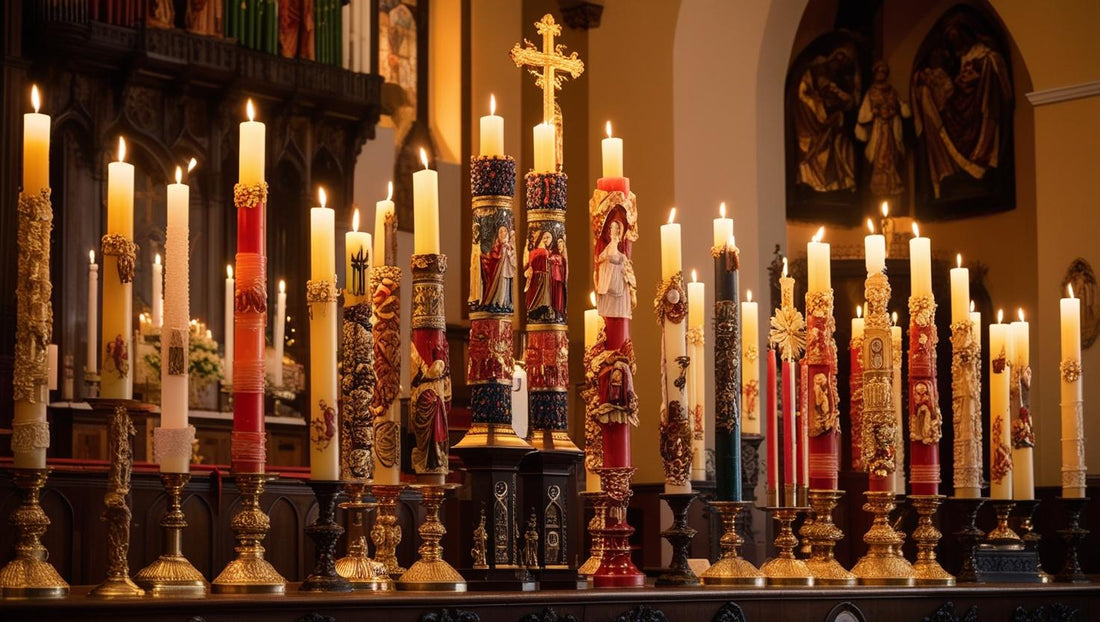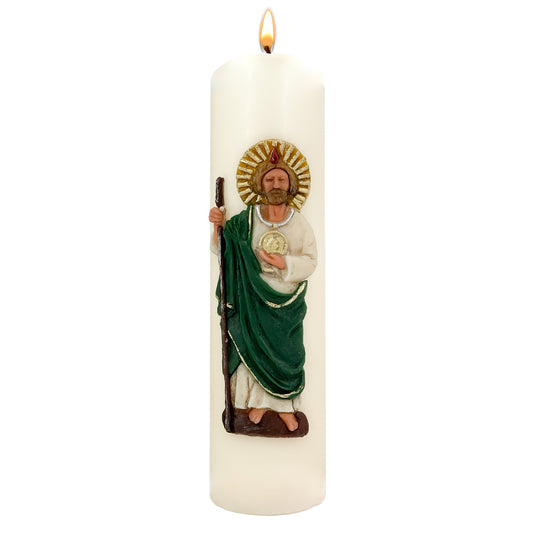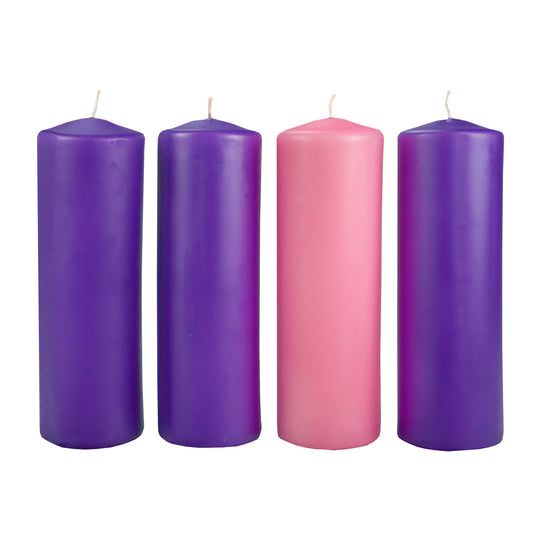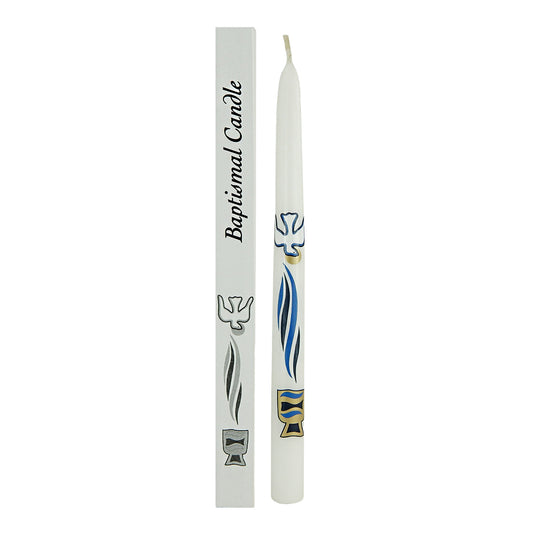
The spiritual and decorative power of Paschal candles
Paschal candles hold deep religious and symbolic meaning, especially within Christian traditions. These large, beautifully decorated candles are lit during the Easter Vigil to represent the light of Christ rising from the dead, bringing hope and renewal to the world. Often placed prominently in churches, these candles symbolize Jesus’ victory over darkness and death, serving as a reminder of faith, resurrection, and eternal life.
Design and features of Paschal candles

Paschal candles are distinct in size, design, and symbolism. Typically tall and white, they are adorned with specific symbols, such as the cross, the Greek letters Alpha and Omega, and the current year, all of which represent Christ as the beginning and the end. This candle is a profound symbol in Christian liturgy, representing the light of Christ and His resurrection. Lit during the Easter Vigil, it signifies Christ's triumph over darkness and death, bringing hope and new life to believers.
The candle is typically made of pure beeswax, symbolizing the sinless Christ, with the wick representing His humanity and the flame His divine nature. It is adorned with a cross, the Greek letters Alpha and Omega—denoting Christ as the beginning and the end—and the current year, emphasizing His eternal presence. Five grains of incense are inserted in the form of a cross, recalling the five wounds of Christ during His crucifixion. Throughout the Easter season and during baptisms and funerals, the Paschal candle serves as a reminder of the hope and new life found in Christ's resurrection.
The role of Paschal candles in Easter and beyond

The use of Paschal candles begins at the Easter Vigil, where the candle is lit from the blessed fire and carried in procession into a darkened church. This powerful ritual symbolizes the resurrection of Christ, bringing light into a world of darkness. Beyond Easter, these candles are used at baptisms to symbolize the light of Christ passed on to the newly baptized and at funerals to signify the hope of resurrection and eternal life.
How large are Paschal candles?

Paschal candles are traditionally large, prominent ones used in Christian liturgy, especially during Easter. Their size varies to suit different church settings and liturgical needs. The height of some of these candles might reach six feet. A candle around 18 inches in diameter would look great on the mantel, even if it's likely a little bit too big for the house. It will be a wonderful addition to your Easter decorations.
Choosing the right candles

For churches, selecting the right Paschal candle is an important decision. Factors like size, design, burn time, and quality of materials matter to ensure the candle serves its symbolic and practical purpose throughout the year. The market offers beautifully hand-decorated candles in various styles to match the traditions and aesthetics of different congregations. Whether ornate or simple, the candle’s presence carries a deep message of hope, faith, and continuity.
Paschal candles in churches and homes

While Paschal candles are traditionally used in church, some people choose to bring smaller versions into their homes during the Easter season as a personal reminder of Christ’s light. The candle holds deep devotional and symbolic meaning in both church and home settings. In the church, it is lit during the Easter Vigil, symbolizing the light of Christ rising from the darkness of death and bringing hope to the world. Its tall, white form, often adorned with a cross, alpha and omega symbols, and the current year, reminds the congregation of Christ’s eternal presence and victory over sin and death.
Throughout the Easter season and at baptisms and funerals, the Paschal candle stands as a sign of new life and resurrection. In home settings, a smaller candle can serve as a powerful devotional object, reminding families of Christ’s light in their daily lives. Lighting it during prayer, especially around Easter, reinforces faith and unity within the household. Whether in grand cathedrals or humble homes, the Paschal candle carries the profound message of light, life, and renewal.
Church and home decorations with Paschal candles

Paschal candles are typically placed in tall candle holders near the altar or baptismal font in churches. Surrounding them with white lilies, fresh flowers, or greenery enhances their symbolic connection to new life and resurrection. During Easter, many churches create a dedicated space for the religious candle, accented with gold or white cloth, representing purity and the joy of the resurrection. Subtle lighting around the candle can amplify its glow, creating a serene, reflective atmosphere.

For home settings, smaller Paschal candles can be placed on a dining table, prayer shelf, or mantelpiece during the Easter season. For a meaningful centerpiece, surround the candle with simple white flowers, glass votives, or a small wreath of greenery. You might also include a bowl of water or a small cross nearby, tying the display to baptismal symbolism. If you have children, consider decorating the space with handcrafted Easter symbols like lambs or doves to reinforce the celebration of life and faith.
Bringing light and meaning to your space

Paschal candles are more than just ceremonial objects—they embody the heart of Christian belief in resurrection and hope. Using these candles in decoration is about more than beauty — it’s about bringing spiritual meaning into your environment. From their lighting at the Easter Vigil to their use throughout the liturgical year, Paschal candles remind worshippers of the light that overcomes darkness. Whether standing tall in a church or glowing quietly in a home, Paschal candles shine as a symbol of hope, renewal, and the enduring presence of Christ.





















